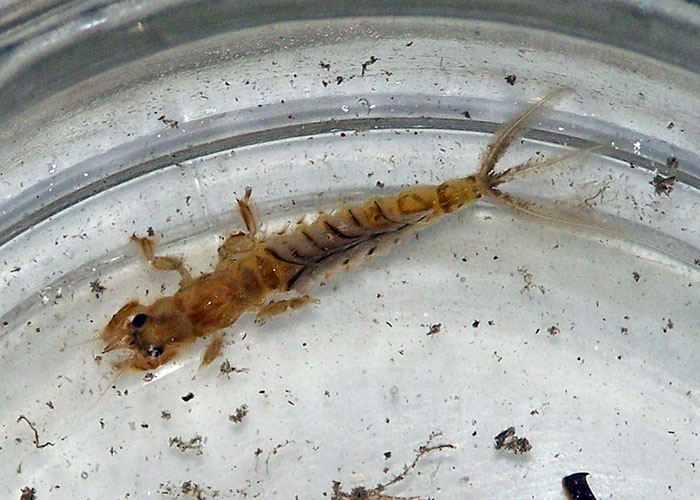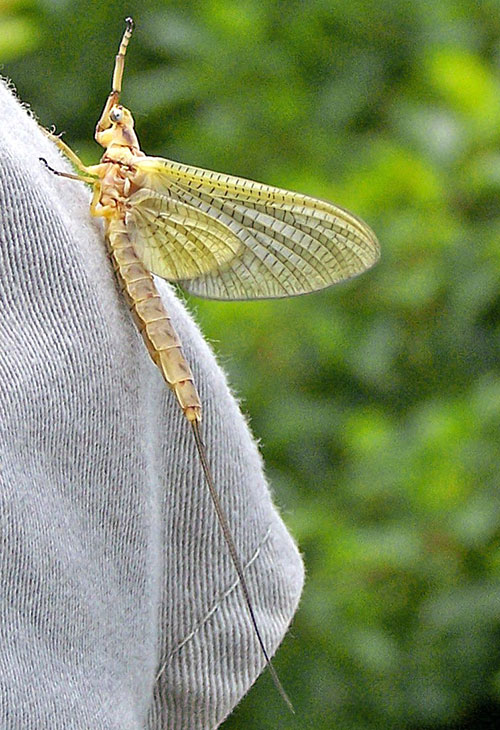Greetings, BugFans,
The BugLady loves common names. They tell an amazing amount of information about the way a plant/animal looks, acts, sounds, what it was used for, what it might resemble from the Old Country, folklore, etc, etc. What common names don’t do is tell you who the plant/animal is, scientifically. The Mayfly isn’t remotely related to a housefly. It’s in the order Ephemerata (houseflies and their cohorts are Diptera), and it truly is ephemeral. Plus, the giant hatches for which mayflies are famous are not restricted to the month of May.
Female mayflies lay 500 to 1,000 eggs each, dropping them into or placing them under the water’s surface. Immature mayflies (naiads) are aquatic, living under water, especially running water, for 6 weeks to 3 years, and going through 21 molts as a naiad. Mayfly naiads chew on plant material and fish chew on mayfly naiads. Many species are habitat specialists, and pollution is threatening their survival.
When it’s time to emerge as adults, they have an unusual middle step. The nymph molts into a smoky-winged, transitional adult phase called a “sub-imago” (or “dun”) for a few hours, and then molts again into the final, clear-winged adult stage called the “imago;” (“spinner,” to fisherpeople). No other insects molt after reaching the winged, adult stage.
Mayflies emerge from the water by the googol, impairing visibility for drivers and causing the snowplows to be mobilized in some lakeside communities to clear their slippery little bodies off the roads. The BugLady calls this the “Normandy Beach” reproductive strategy—if you put enough soldiers out there, some will reach the beachhead (e.g. live long enough to mate).
They are eaten by birds, bats, dragonflies, toads, frogs and fish. Adults do not have functional mouth parts and do not eat; they only live for a few hours (ephemeral, get it?)
The BugLady

